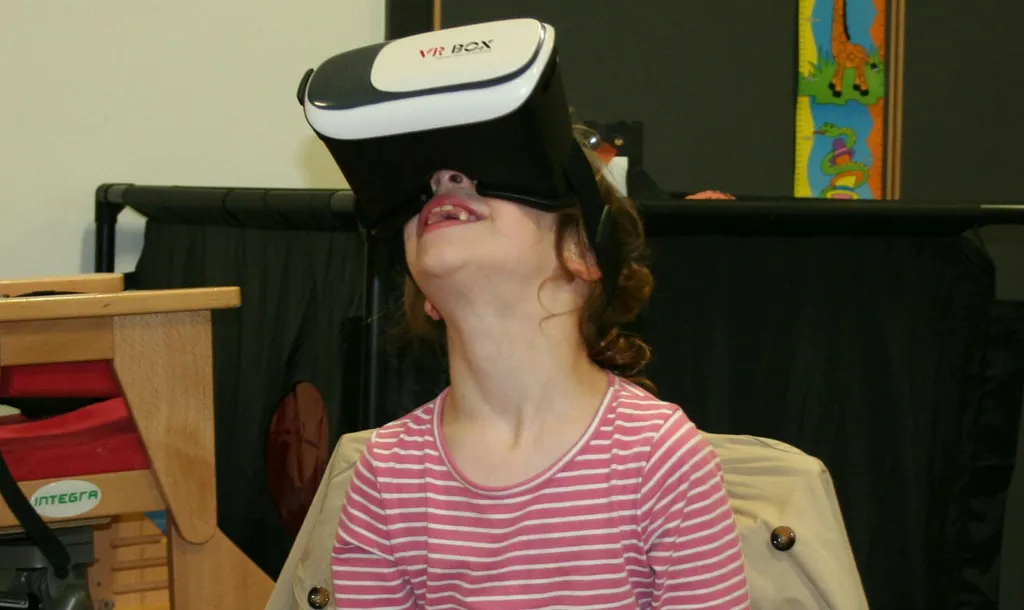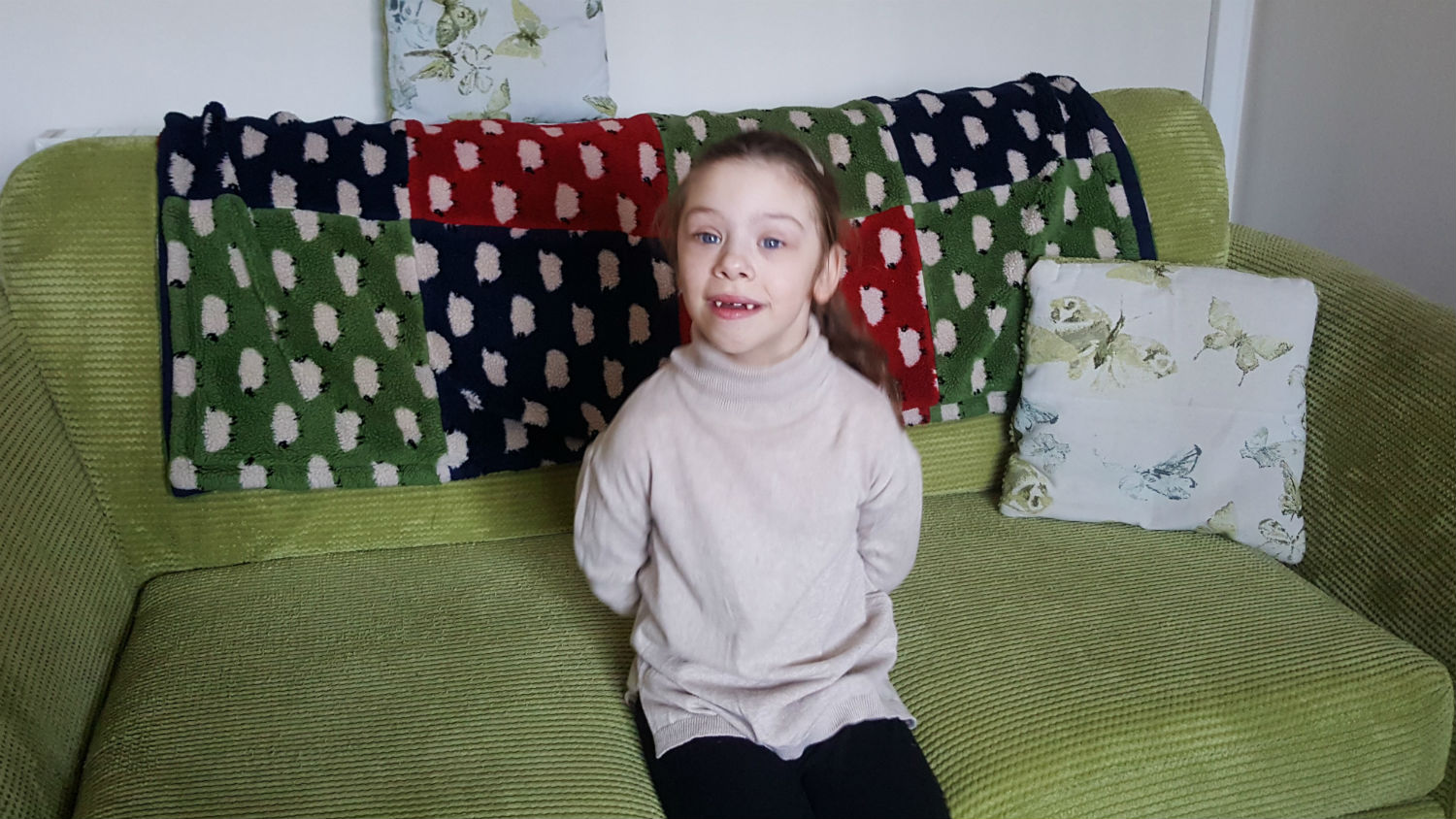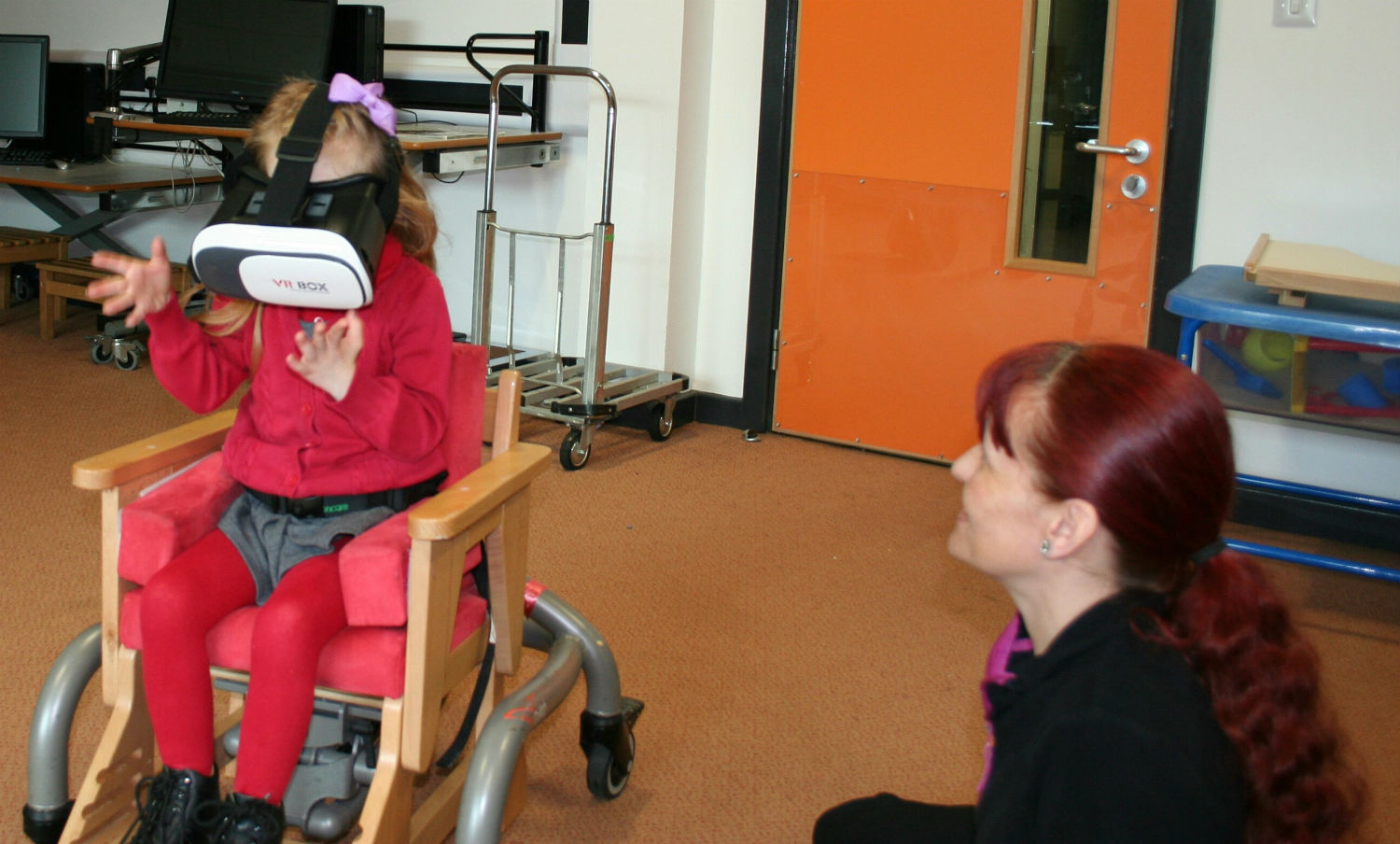Update: Chaytor has now launched a crowdfunding campaign to continue developing his app and release it for all. He’s looking for £5,000 in the next 40 days.
This is Imogen. She’s seven years old and lives in the UK. She likes to visit the seaside, play arcade games and loves to swim. She owns two chihuahuas, Fudge and Ru, and a cat name Jasper. Fudge is her favorite, and she’ll bake buns with her dad, too. She also has Williams Syndrome.
Williams Syndrome is a rare genetic disease that causes children to struggle with grasping concepts like numbers and learning new things. Education in general is a real challenge for Imogen, but VR can help us learn in entirely new ways. Her father, Craig Chaytor, came to realize that last year.
Chaytor picked up a mobile VR headset in January 2016, and he immediately spotted that it could be a big help for his daughter, so he let her have a go.
“I noticed how well she adapted to it,” he tells me. “So I knew she’d like to see more.”
But seeing more meant making more so Chaytor, who had already started thinking of ways to aid Imogen’s development and progression, started work on his own VR experience. He came up with a set of videos with different themes, each lasting around four to six minutes. Viewers could dive under water, soar through the air, get up close with animals and get lost in space and stars. The original sounds for each were stripped away in favor of calm music, animal sounds and more, as Imogen could become distressed by loud noise.
To me and you, those might sound like simple experiences, but to Imogen this was something else entirely. You can see her reaction below.
“The scene was magical to witness,” Chaytor recalls. “It brought a tear to my eye because she was showing signs of improved development and progression in learning. She started doing things we didn’t think she could do.”
It’s difficult to imagine the joy that Chaytor must have felt in that moment. For parents that have loved and cared for their child for all those years, seeing this kind of instantaneous reaction is almost unheard of.
“A truly amazing sight to see,” he says. “Made me happy.”
According to Chaytor the experience both helped to relax Imogen and stimulate her brain activity. After seeing such dramatic effects in his own child, he decided his work could benefit others, too. With permission, he conducted trials on other children at Imogen’s school who gave a similar reaction.
“Each child loved the project again,” he said. “It was an amazing sight to see. It was a huge success.”
Even the teachers were stunned by what he had created.
With such promising results, Chaytor is looking to take the project further. He’s searching for funding, or for someone to commission a full app, and hopes to create a VR media player that will allow anyone in the world to see his creation. He’s keen to keep it on mobile VR to as to make it accessible for all.
“Anybody can use it to give all children with or without a disability a memory to remember in sensory VR,” he says.
A lot of the work we hear about in VR for Good is coming out of research labs or funded studies. Chaytor, however, took it upon himself to help his daughter, and in the process has created something that might benefit others.































